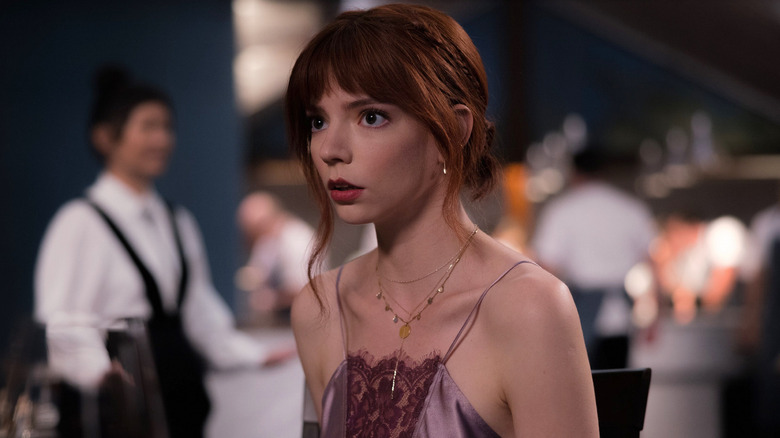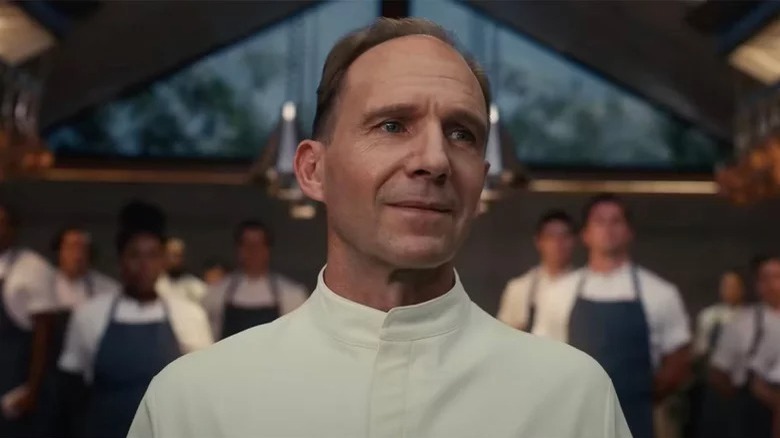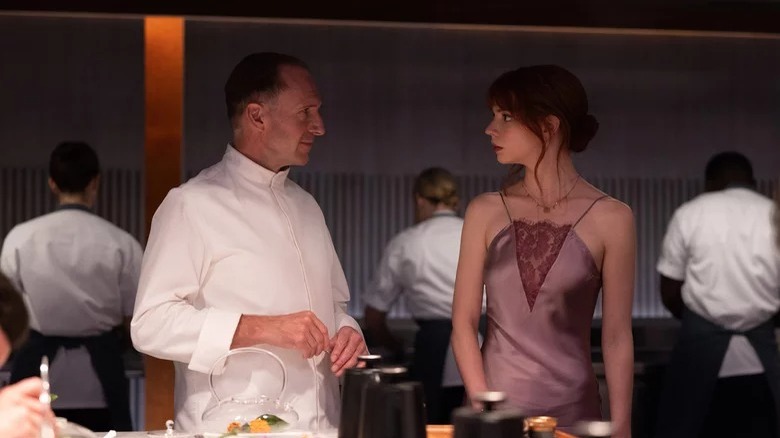The Menu's Director Mark Mylod Dives Into The Movie's Dark Human Psychology
This article contains spoilers for "The Menu."
Does any environment seem like a better setup for a thriller than a fine dining establishment? There's plenty of horror to be mined from a supposedly fun tradition that involves calculating tips, choosing the right silverware from an intimidating lineup, and politely navigating a pretentious menu that may or may not be way out of your price range. The team behind "The Menu" knows this, and they pour every restaurant anxiety audiences can think of into a single movie with the intense and hilarious new movie. Here, mispronouncing a dish or scowling at a server won't just make you wince –- it might be the last straw that gets you killed.
Director Mark Mylod dug into the dark side of the dinner experience in an interview with Vanity Fair, breaking down a particularly tense scene from the movie with its stars, Anya Taylor-Joy and Nicholas Hoult. In it, Mylod revealed that he pulled from human psychology to create the film's sense of claustrophobic good manners as guests continue dining even as people around them begin to be killed.
The psychology of social pressure
"There were so many psychological studies on that," Mark Mylod told Vanity Fair after breaking down a moment when Ralph Fiennes' Chef Slowik confronts Anya Taylor-Joy's Margot:
"When things become threatening in this restaurant, there's so many studies backing it up that given the choice of can you believe that something is really bad happening here? Or do you just wanna pretend it's all a show? 9 out of 10 people will just go, 'It's a show,' and choose to believe that rather than face up to an uncomfortable truth."
While Mylod doesn't cite any particular study, research into bystander intervention, as well as the perceived unreality of other peoples' suffering, are pretty common. Yale University's famous Milgram experiment in the 1960s found that most test subjects would obey orders when prompted, even if those orders included inflicting perceived pain on another person. Meanwhile, research into bystander intervention consistently finds that people in group settings are less likely to help a person in need than people in one-on-one situations.
While no one in "The Menu" is made to hurt one another (aside from, perhaps, Slowik's devoted staff), the diners at Hawthorne sit obediently by while others are killed around them. As with other dinner-set horror films like Karyn Kusama's "The Invitation," the social contract that keeps many of these people squarely in their seats is the film's most sinister unseen villain.
Margot is an obvious outlier
Mark Mylod also spoke to the need for approval that motivates some of the characters in "The Menu," telling Vanity Fair, "They want to belong to this family, to this movement with this cult leader of Chef Slowik up there." He also cited "a human need to belong on some level" as a motivator for the diners who paid exorbitant prices to attend what turns out to be their own funeral. This, though, is a need that Anya Taylor-Joy's Margot doesn't share, and one that she and Mylod said creates a unique tension between the outsider who wasn't on the guest list and the sadistic — if purposeful — chef at the film's center.
"I knew [Taylor-Joy] up again [Ralph Fiennes] would be absolutely fascinating," Mylod said. "[It] would feel like a really equal combative, and yet had this underlying warmth and connection because of that shared empathy." The ongoing tete-a-tete between the pair turns out to be one of the film's most interesting facets, especially when we learn that the pair share a working-class upbringing that puts them at odds with the callous, bourgeoisie diners around them. Unlike the test subjects in the types of studies Mylod mentioned, Margot isn't a passive participant in other peoples' suffering. She acts early and often as the night descends into turmoil, with the proactive survivor's instinct that makes her an excellent final girl — and an impressive psychological outlier.
"The Menu" is now playing in theaters.


